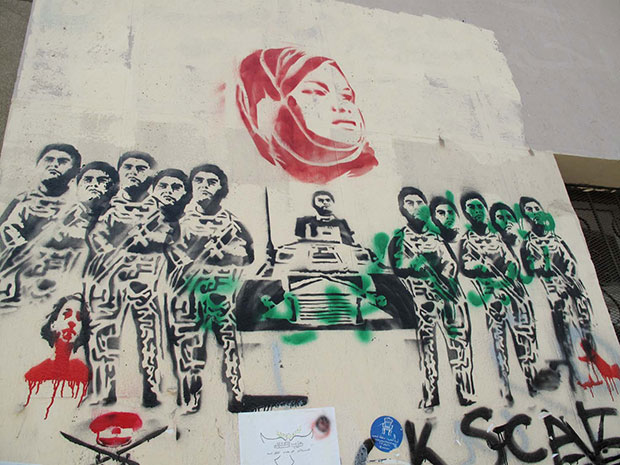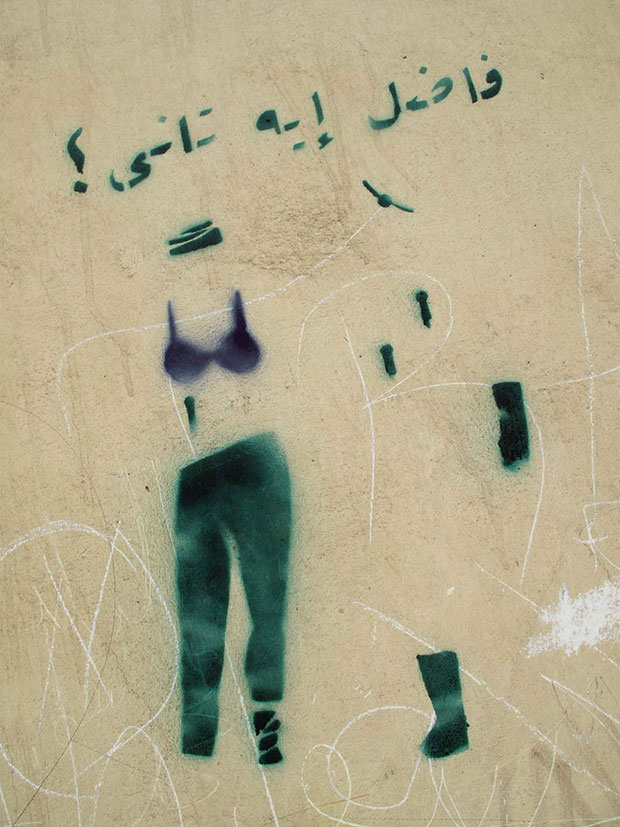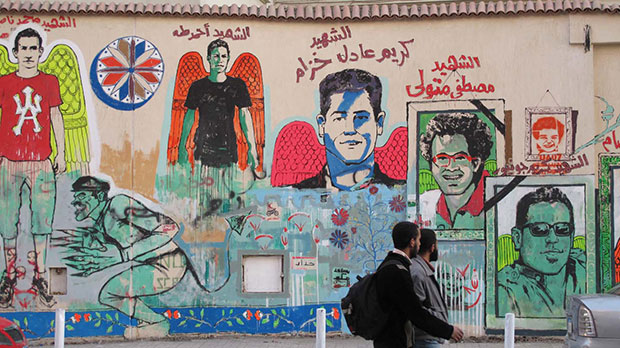
Egyptian street art versus the riot squad
How the protestors of Tahrir Square used paint and stencils to avenge the crimes committed by Mubarak
In the West, the golden age of street art reached its apogee thirty years ago, when the likes of Lee Quiñones and Futura 2000 were repainting New York's subway cars. Yet, elsewhere in the world today, many are increasingly finding a voice via graffiti. Our new book Visual Impact: Creative Dissent In The 21st Century showcases the vital role that visual genres such as street art have played in our turbulent century.
This was, of course, especially evident during the protests in Egypt in 2012, part of the inspiring though often ill-fated “Arab Spring” which nevertheless saw the fall of the longstanding and repressive Mubarak regime. One indicator of the new mood of insurrection was the rise of written messages, stencilled slogans and a general burst of courageous artistic activity previous unseen and unheard under the dictatorship.

The nascent revolution very soon brought its victims; demonstrators shot in the face, or brutally beaten. This adversity was converted by street artists into iconography. One especially potent example of this is “Blue Bra Woman”, a frequently stencilled figure whose image is reproduced in these pages. This was inspired by an ugly episode in which a female protester was violently beaten by soldiers in Tahrir Square, so that her torn abya revealed her blue bra. As well as the obvious distress it caused, this was a potentially humiliating incident. However, the street artists ingeniously turned this violation upside down: her bra became a symbol of defiance and female power in the face of authoritarian violence.

Egyptian women were made to suffer not just for their dissent but for their gender. Another stencilled piece featured here depicts in bold, formidable red, the image of Samira Ibrahim, forced by military man Ahmed Adel al-Mugi to take a “virginity test” along with 17 other female protesters while detained. His image is replicated, clone-like, on a group of soldiers in the piece; Ibrahim’s countenance is set above them, staring beyond them into a better future. The soldiers are beneath her contempt. Find out more about Visual Impact and order a copy here.
